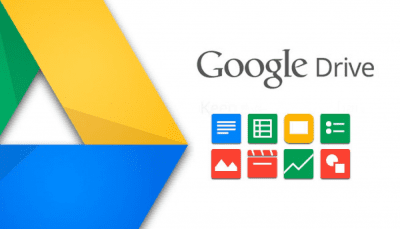The Impact of Using AI for Academic Work

This article by Phil Collins of EssayService comprehensively examines AI’s impact on academia and how it has changed traditional teaching and learning. Learn the pros and cons of AI in education on researchsnipers.com.
The Impact of Using AI in Academia
Artificial intelligence (AI) has been making waves in numerous industries, including education, since the latter part of 2022. As a result, how students learn, teachers instruct, and institutions function has changed significantly due to AI’s integration into academia.
AI tools make writing assignments faster and allow students to put in less effort, but they also have downsides.
This article will critically examine some AI tools used in education, comparing their advantages and disadvantages.
10 Ways AI Used in Education
ChatGPT
ChatGPT is a chatbot that uses artificial intelligence, machine learning, and natural language processing to reply to students’ questions. This search bot can assist students in their academic work by responding to questions they may find challenging.
It can also offer personalized learning and give students feedback on areas where they can improve. So, if you’re, for example, struggling with writing assignments, you can use ChatGPT for guidance or use a professional paper writing service and have experienced writers write my essay for you if you don’t want to deal with the task at all.
Dynamic Scheduling and Predictive Analysis
AI can learn about students’ routines through predictive computing and suggest the best study plan. It benefits the school’s administrative team, students’ service agents, or anyone who does mundane or repetitive work.
A machine won’t get bored, tired, or take a break. And if it runs into a problem or has a question that goes beyond its programming, a human can help. This efficiency increases productivity and reliability more than employing more staff.
Adaptive Learning Platforms
These platforms use machine learning to evaluate student performance data and modify the learning environment as necessary. As a result, the system can tailor the curriculum to each student’s needs and learning style, ensuring they get the most out of their education. They can also aid in finding the right paper writing service to write my college essay, tracking learners’ feedback, and using it to improve.
Custom Textbook Initiatives (CTI)
CTIs are educational resources tailored to the specific needs and requirements of a particular course or program. Teachers can import a syllabus, and AI will produce a core-content-filled textbook. It allows for great personalization throughout the school year and between classes and grades.
One of the main benefits of custom textbooks is that they are often more cost-effective for students. Instead of purchasing multiple books or supplementary materials, students can buy a single resource containing all the information they need for their course.
Systems for Intelligent Instruction
Intelligent tutoring systems are made to do what a human tutor would do. Machine learning is used in these systems to evaluate learner performance and provide individualized feedback.
The system can pinpoint areas where students are having difficulty and provide additional assistance. Also, the best assignment services are beginning to integrate these systems to serve engineering, science, and mathematics students.
Virtual Classrooms
These are online learning environments that replicate the physical classroom. AI tools are used in these classrooms to make it easier for students and teachers to talk to each other in real-time.
Intelligent Tutoring Systems
These systems analyze student data and identify areas where students require assistance. Then they give those students personalized learning tips, set study objectives, and provide feedback.
Machine Translation
Although modern translation apps haven’t caught up with the accuracy of human translators, machine translation can be quicker and more effective. For many students learning a second language, machine translation allows bridging the language gap.
Productivity Assistants
Microsoft created Cortana, a virtual assistant that works with Windows. It allows people with visual impairments to operate computers using just their voice.
Businesses like Facebook are already working on other AI productivity assistants that improve the educational experience of differently abled students. If all goes well, students with special needs will gain greater autonomy thanks to these advancements.
Automatic Grading Systems
These systems can automatically grade tests, quizzes, and assignments. In addition, they evaluate and offer advice to students utilizing machine learning algorithms. Teachers may be able to save time and provide timely feedback to their students as a result of this.
Pros of Using AI for Academic Work
Personalized Learning
Through AI tools, students can receive individualized instruction, learn at their own pace, and concentrate on their growth areas. As a result, this strategy may result in increased academic achievement and engagement.
Increased Efficiency
By automating routine tasks like grading and providing feedback, AI solutions can help students and teachers save time. Also, teachers may concentrate on other aspects of their profession due to this improved efficiency while students learn for longer.
Improved Accessibility
Students with disabilities and those in rural areas may find AI technologies easier to navigate. For instance, virtual classrooms allow students to participate in educational activities from any location. Meanwhile, AI productivity tools let them work faster while learning and adapting to their needs.
Enhancement of Students’ Learning Outcomes
AI-powered analytic tools may collect and analyze data on students’ learning behavior. The results will tell educators where and how to optimize their lectures to improve their students’ learning outcomes.
Cons of Using AI for Academic Work
Technology Abuse
The overuse of technology is one of the drawbacks of using artificial intelligence in educational settings. Students may become overly dependent on AI tools, reducing their critical and creative thinking capacity. So, many people support the idea of limiting AI’s adoption in schools and teaching students to think for themselves rather than rely solely on AI tools.
Concerns About Data Usage and Privacy
AI-powered tools cause privacy concerns due to the volume of data they collect and evaluate. As a result, it is critical to guarantee the confidentiality of the data gathered by AI technologies.
As with any other technology, people aren’t yet sure how AI uses these students’ data, which makes them wary. Besides, there’s also the concern of having an autonomous system control such amounts of data.
No Personal Connection
AI systems could eventually replace teachers. And this isn’t ideal because education relies heavily on the social interaction between teachers and students and the influence of those social relationships on behavior. As a result, we risk promoting less socialization in pursuing more efficient AI-powered learning systems.
Conclusion
AI tools have the potential to alter teaching and learning practices. Individualized learning, increased productivity, and better accessibility is all advantages of using these tools. But it is essential to be aware of the potential adverse effects, such as issues with privacy and excessive reliance on technology.
Alexia is the author at Research Snipers covering all technology news including Google, Apple, Android, Xiaomi, Huawei, Samsung News, and More.












